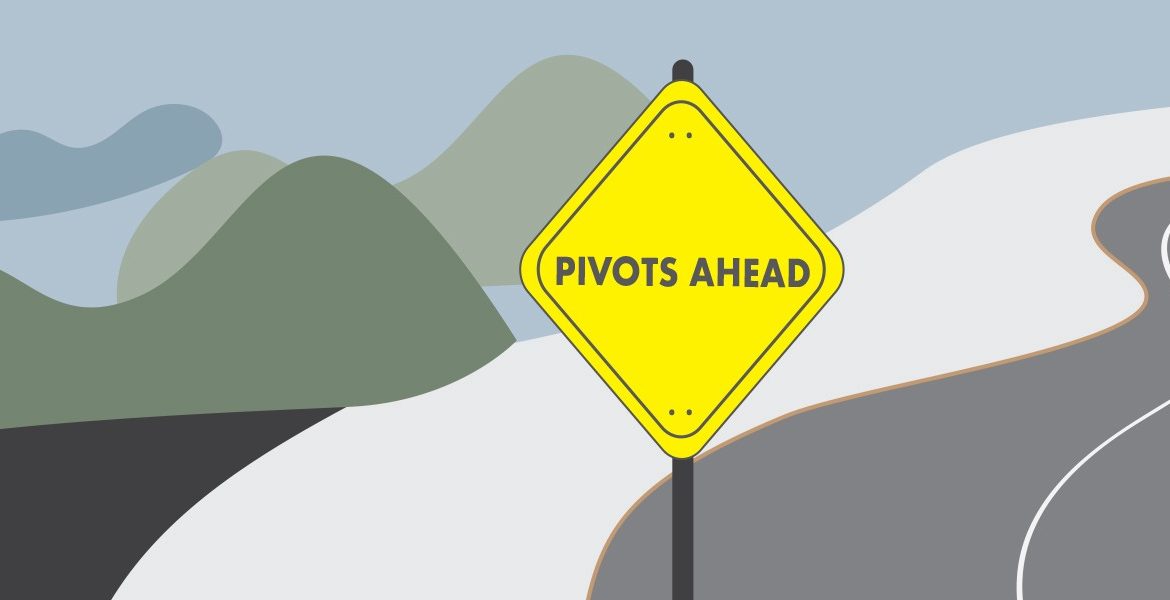Case studies of pivoting
Case studies of pivoting serve as inspiration, especially for many businesses that have had to make major changes in direction over the past year.
Pivoting means fundamentally changing the direction of a business when you realize the current products or services are not meeting the needs of the market.
Conditions for a successful pivot
The Harvard Business Review says three conditions are necessary for such lateral moves to work.
- A pivot aligns with one or more of the trends from the pandemic such as remote work, and enhanced use of technology.
- A pivot is a lateral extension of the firm’s existing capabilities, not undermining its strategic intent.
- Pivots offer a sustainable path to profitability, one that preserves and enhances brand value in the minds of consumers.
If examples help, here are 15 inspiring case studies of pivoting.
Case studies of pivoting (A-C)
- AIRBNB: In 2007, friends Brian Chesky and Joe Gebbia rented out air mattresses in their San Francisco apartment to conference attendees. All nearby hotels were booked out and demand for accommodation was high. They called their service Air Bed and Breakfast. However, they soon realized this business model wouldn’t be sustainable unless there were conferences. So, they pivoted to open the concept to travelers looking for cheap accommodation and an authentic local experience. Today, Airbnb is estimated to be worth about US$38 billion.
- BEST BUY: Focused on virtual support and technology repair with more people working online for school and business.
- CONTEXT TRAVEL: Offers cultural walking tours in many cities. They changed to offering $35 online seminars as a test using Eventbrite to sell tickets. The test was successful, and a broader rollout is planned.
Case studies (D-N)
- MATTEL: Came out with a new line of Fisher-Price action figures that feature delivery drivers, grocery store workers, and healthcare professionals. Firstly, the pivot shows that Mattel understands the real superheroes that people are honoring these days.
- MIND THE PRODUCT: Puts on a series of large in-person events around the world. Instead of porting this format online directly, the team broke keynote sessions into a multi-day series of lectures that were shared free of charge. The goal was to use these online sessions to drive leads to their training business.
- NETFLIX: Viewers easily forget that a few years back Netflix was the service that delivered DVDs to your mailbox. Netflix saw the writing on the wall for DVD viewing. Gradually the platform added a streaming service. Today many consumers no longer own a DVD player but are accustomed to streaming video on their phones, computers, and other devices.
Case studies of pivoting (P-R)
- PATAGONIA: Recently expanded Patagonia Provisions to include an entire marketplace of food from other companies—all with long shelf lives. From coconut oil to coffee, the new marketplace hopes to provide long-lasting food and maintain the global food supply chain.
- PLAY-DOH: Today a company called Play-Doh is well known and a part of many childhood memories. Many people fondly remember the aroma of opening a new can of Play-Doh.Few people realize that this beloved item was originally launched in the 1930s as a wall cleaner. The cleaning product was dubbed “Kutol”. Designed to clean coal heating soot from walls, Kutol experienced a decline in sales as gas heating grew in popularity.
- RED ROOF HOTELS: Offered day rates for workers. It allowed individuals to have a quiet, private space to work in which might be more comfortable and flexible and provide a needed change of scenery.
Case studies (S-T)
- SHOPIFY: Back in 2004, Tobias Lutke, Daniel Weinand, and Scott Lake attempted to open their own online snowboard equipment store, called Snowdevil. However, they did not like any e-commerce products on the market, so instead, they built their own. The shop was not successful at all, but they loved the storefront they built. As a result, they decided to sell it to other businesses that needed a better online store. The rest is history.
- SPOTIFY: Before the pandemic, the company figured that advertising revenue would grow even faster than the free user base. A pivot was to offer podcasts. The platform saw artists and users upload more than 150,000 podcasts in just one month. It signed exclusive podcast deals with celebrities and started to curate playlists. The shift in strategy made Spotify more of a tastemaker.
- T3 EXPO: Atrade show and corporate events company, took their existing skills and tools for planning to transform a convention facility into a COVID-19 hospital. The company relied on its original foundation but applied it for a completely different type of need.
Case studies of pivoting (T-Z)
- TOV: A U.S. furniture manufacturer, managed to grow its business by 200% year over year. They went e-commerce. After the initial slowdown, people went to furniture because they wanted to upgrade or change what they were now seeing 24 hours a day while they were stuck at home.
- WITHLOCALS: Is a travel service where you spend time with a local experience something. When travel went down, they pivoted to offering online classes like pasta-making to experience a local market for a different perspective.
- YOUTUBE: “Tune In, Hook Up” was the unofficial slogan of the video-dating site YouTube that launched on Valentine’s Day in 2005. The concept never took off. So when the co-founders realized users were using the site differently than they’d intended, they pivoted. The breakthrough came when Co-Founder Jawed Karim posted the first-ever video famously saying elephants have “really, really, really long trunks”. This inspired users to post silly videos of themselves on the site. In 2006, YouTube was bought by Google for US$1.65 billion. It’s now the most popular video-sharing site on the internet with an estimated worth up to US$160 billion.
Do these case studies show you the value of pivoting? Could you business benefit from knowing how it can pivot





